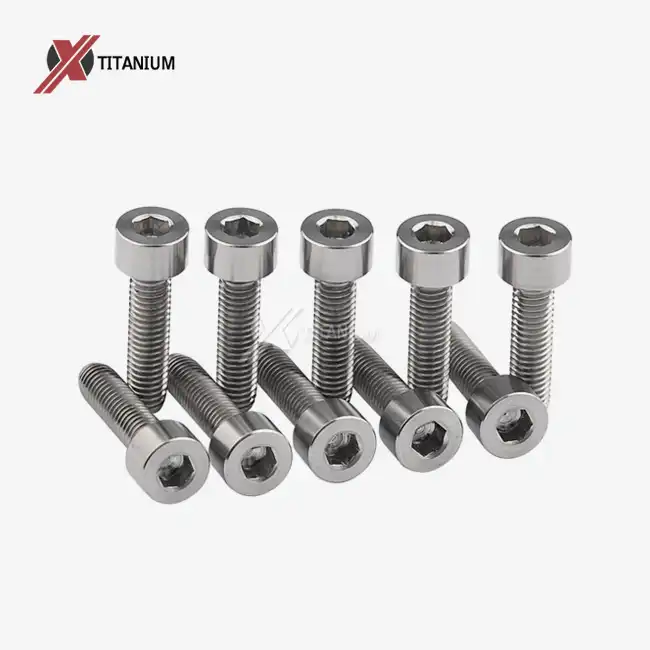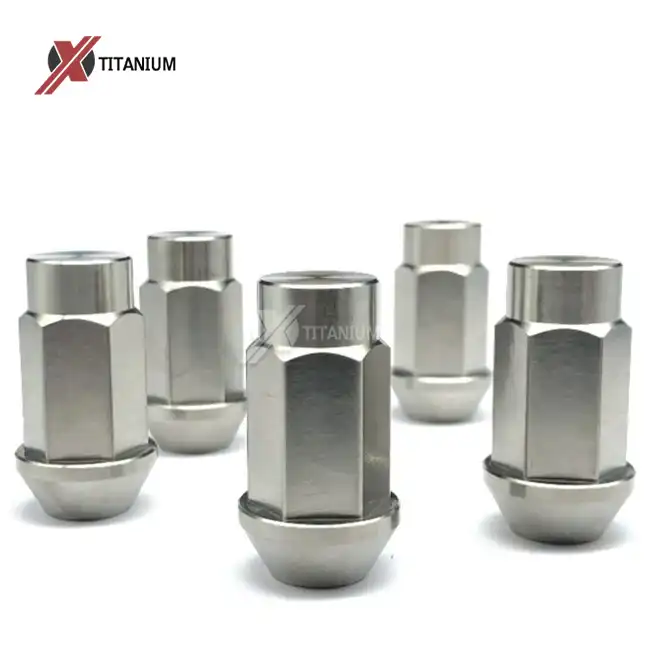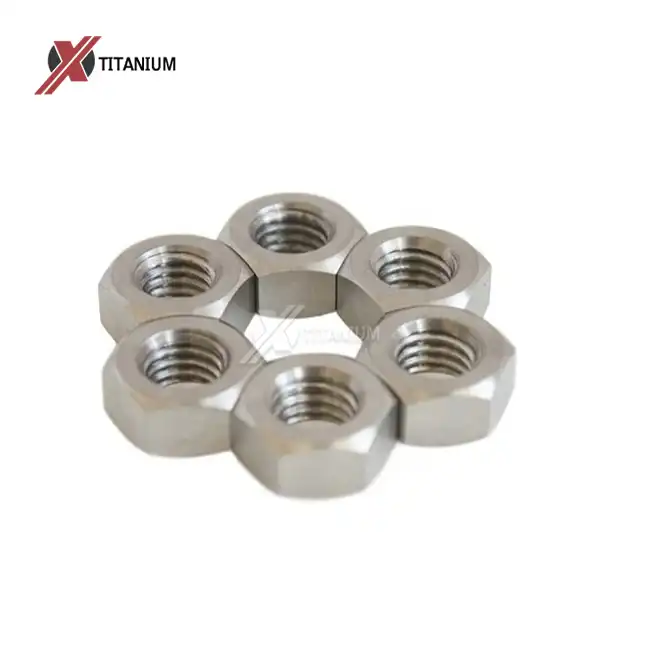Introducing Titanium Jam Nuts and Their Applications
What are Titanium Jam Nuts?
Titanium jam nuts, also known as lock nuts or safety nuts, are specialized fasteners designed to prevent loosening in high-vibration or high-stress environments. These nuts are made from titanium alloys, typically Grade 5 (Ti-6Al-4V), which offers an exceptional combination of strength, lightweight properties, and corrosion resistance. The unique design of jam nuts features a thinner profile compared to standard nuts, allowing them to be "jammed" against a primary nut to create a secure locking mechanism.
Advantages of Using Titanium Jam Nuts
The use of titanium jam nuts offers several advantages over traditional steel or aluminum alternatives. Titanium's high strength-to-weight ratio makes these nuts ideal for applications where weight reduction is critical, such as in aerospace, automotive racing, and marine industries. The material's inherent corrosion resistance ensures long-term reliability in harsh environments, including exposure to seawater, acids, and various chemicals. Additionally, titanium's biocompatibility makes these nuts suitable for medical implants and devices.
Common Applications for Titanium Jam Nuts
Titanium jam nuts find widespread use in various high-performance and demanding applications. In the aerospace industry, they are utilized in aircraft engines, structural components, and satellite systems. The automotive sector, particularly in racing, employs these nuts in suspension systems, engine mounts, and exhaust assemblies.
Marine applications benefit from titanium jam nuts in propeller shafts, rigging hardware, and underwater equipment. The medical field relies on these fasteners for orthopedic implants and surgical instruments. Industrial sectors such as chemical processing and oil and gas exploration also leverage the unique properties of titanium jam nuts in their equipment and machinery.
Step-by-Step Guide to Installing Titanium Jam Nuts
Preparation and Safety Measures
Before beginning the installation process, it's essential to take proper safety precautions and prepare your workspace. Ensure you have all the necessary tools, including wrenches, a calibrated torque wrench, and personal protective equipment such as safety glasses and gloves. Clean your work area to prevent contamination of the fasteners. If working on an existing assembly, thoroughly inspect the bolt and surrounding components for any signs of wear, damage, or corrosion that may affect the installation.
Cleaning and Thread Preparation
The first step in properly installing titanium jam nuts is to clean the threads of both the bolt and the nuts. Use a wire brush or compressed air to remove any dirt, debris, or old thread-locking compounds. Inspect the threads for any damage or deformation. If necessary, use a thread file or die to repair minor imperfections. For optimal performance, apply a small amount of anti-galling compound specifically designed for use with titanium fasteners. This compound helps prevent the titanium surfaces from cold-welding or seizing during installation and future disassembly.
Installation Technique
To install the titanium jam nuts, begin by threading it onto the bolt, followed by the primary nut. Position both nuts at the desired location on the bolt. Using a calibrated torque wrench, tighten the primary nut to the manufacturer's specified torque value. It's crucial to adhere to these specifications to ensure proper clamping force without over-stressing the fastener.
Once the primary nut is tightened, hold it in place with a wrench to prevent it from rotating. Take a second wrench and tighten the jam nut against the primary nut. This process, known as "jamming," creates a locking effect that resists loosening due to vibration or dynamic loads.
Verifying the Installation
After installation, it's important to verify that the titanium jam nut assembly is secure. Visually inspect the nuts to ensure they are fully seated against each other and the underlying surface. If possible, mark the position of the nuts relative to the bolt or surrounding structure with a paint pen. This marking allows for easy visual inspection during maintenance to check if any movement has occurred. In critical applications, consider using a torque-stripe compound across the nut-bolt interface as an additional visual indicator of any loosening.
Maintenance and Inspection of Titanium Jam Nut Installations
Regular Inspection Procedures
Maintaining the integrity of titanium jam nuts installations requires regular inspections. Establish a routine inspection schedule based on the application's criticality and operating conditions. During these inspections, visually check for any signs of loosening, such as gaps between the nuts or movement of the paint marks or torque stripes. Use a flashlight to examine the assembly from multiple angles, looking for any indications of wear, fretting, or corrosion. In high-vibration environments, consider using specialized equipment like ultrasonic bolt tension monitors to verify the fastener's clamping force without disassembly.
Retightening and Replacement Guidelines
If any loosening is detected during inspection, it's essential to address it promptly. In most cases, simply retightening the jam nut assembly to the original specifications is sufficient. However, if repeated loosening occurs, investigate the root cause, such as inadequate initial torque, excessive vibration, or thermal cycling.
When retightening, always use the proper tools and follow the original installation procedure. If any damage to the threads, nuts, or bolt is observed, replace the entire fastener assembly. For critical applications, consider implementing a scheduled replacement program based on service life or operating hours, even if no visible issues are present.
Long-term Care for Titanium Fasteners
To ensure the longevity and performance of titanium jam nut installations, implement proper long-term care strategies. Protect the fasteners from galvanic corrosion by using appropriate isolation techniques when in contact with dissimilar metals. In marine or corrosive environments, periodically clean the assemblies with fresh water and apply a suitable protective coating. Maintain detailed records of installations, inspections, and any maintenance performed. This documentation is invaluable for tracking the history of critical fasteners and planning preventive maintenance.
Conclusion
Proper installation and maintenance of titanium jam nuts are crucial for ensuring the safety, reliability, and longevity of mechanical assemblies in various high-performance applications. By following the steps outlined in this guide and implementing regular inspection and maintenance procedures, you can maximize the benefits of these advanced fasteners.
Remember that while titanium jam nuts offer exceptional properties, their correct application and care are essential for optimal performance. For more information on titanium fasteners and their applications, please contact us at info@cltifastener.com or djy6580@aliyun.com. Our team of experts is ready to assist you with your specific titanium fastener needs.




